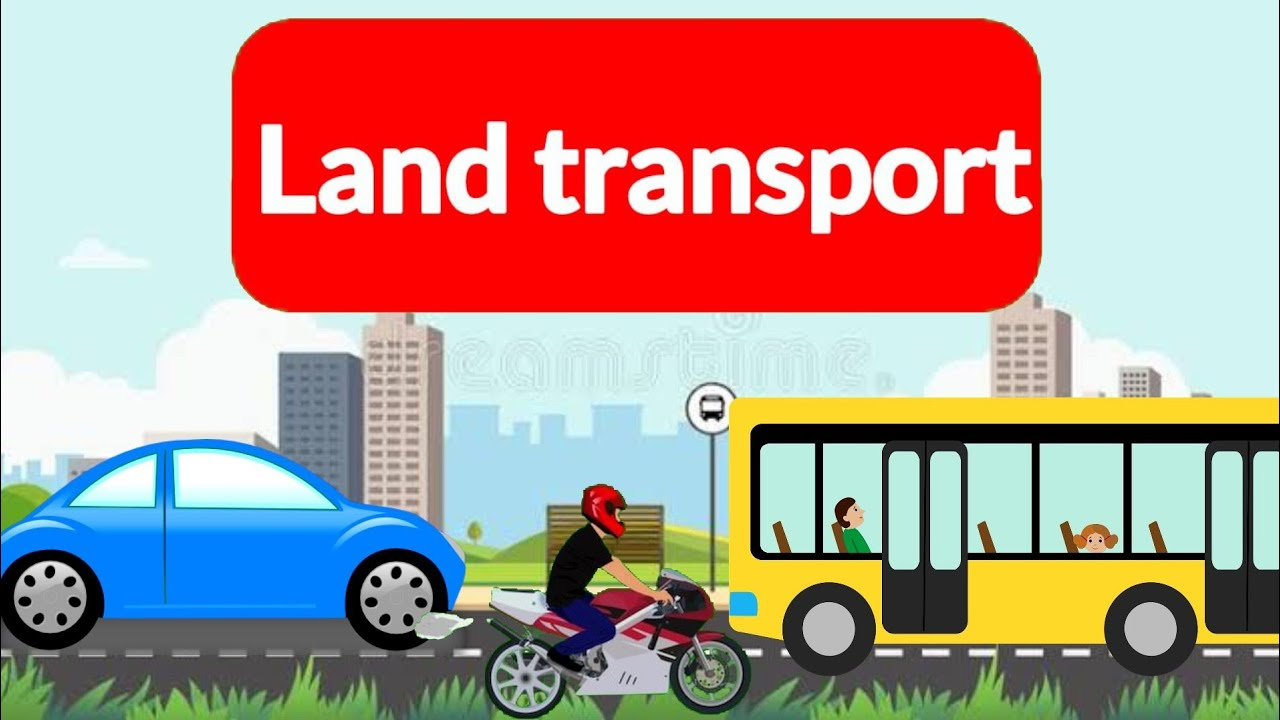Warehouse Quality Checker (1 years diploma)
Warehouse Quality Checker click here
Brief Job Description
Warehouse Quality Checkers are also know as Warehouse Quality Assessors or Quality Inspectors.
Individuals in this role are responsible for inspecting the quality and checking conformance to
specifications of inbound as well as outbound goods, segregating goods that do not meet requirements
and documenting the results.

Personal Attributes
This job requires the individual to work well with his/her team and achieve joint goals. The individual must
be able to prioritize and execute tasks within scheduled time limits. The individual should be able to
maintain high concentration levels throughout his/her shift.
Experience
10th Class
OR
8th Class (+ 2 years of ITI)
OR
8th Class (+ 1 year of ITI) with 1 Year of
experience relevant experience
OR
Certificate-NSQF (Loader/ Unloader – level 2/
Kitting and Labelling Executive – level 2) with
2 Years of experience relevant experience
Minimum Level of Education for Training in
School
Pre-Requisite License or Training NA
Minimum Job Entry Age 18 Years
Last Reviewed On NA
Next Review Date NA
NSQC Approval Date
Version 3.0
Prepare for Testing
Description
This unit is about preparing for testing
Elements and Performance Criteria
Obtain necessary information from the supervisor
To be competent, the user/individual on the job must be able to:
PC1. understand the work schedule, daily targets and priorities (if any) from the supervisor
PC2. obtain the inspection checklist, list of inbound and outbound items to be checked from the
supervisor
PC3. obtain information on the customer requirements, product specifications (such as weight,
size, functional aspects, etc.) and tolerances which need to be checked for conformity.
PC4. find out what inspection method (such as random sampling, stratified sampling, 100%
inspection, etc.) is to be used from the sget the shift schedule and the total number of
packages required by the end of the day from supervisor.
Get the testing equipment ready
To be competent, the user/individual on the job must be able to:
PC5. determine the testing equipment to be used for each product from the inspection checklist.
PC6. collect any portable testing equipment required from the storage area.
PC7. visually inspect the testing equipment to see if it is fit for use.
PC8. adjust any settings if required on the testing equipment.
PC9. visually inspect the testing equipment to see if it is fit for use.
PC10. conduct a trial to ensure that the testing equipment is ready to carry out inspection.
Knowledge and Understanding (KU)
The individual on the job needs to know and understand:
KU1. types of documentation in organization e.g. inspection checklist, damaged goods form,
quarantined goods forms, etc.
KU2. risk and impact of not following defined procedures/work instructions
KU3. records to be maintained and implications of non-maintenance of the same
KU4. knowledge of security procedures
KU5. rules and regulations on the warehouse floor as per companys standard operating procedure
(SOP)
KU6. knowledge of suppliers and customers along with their respective products
KU7. organizational procedure for dealing with goods that failed the test
KU8. escalation matrix for reporting identified problems
KU9. implications of improper quality inspection to the company
KU10. knowledge of the desired specifications and tolerances for different goods.
KU11. knowledge of different types of tests to be carried out on different products
KU12. technical knowhow to operate the testing equipment.
KU13. deciding whether the goods have passed the test or not
KU14. response to emergencies e.g. fire
KU15. safety regulations while working on the warehouse shop floor
Generic Skills (GS)
User/individual on the job needs to know how to:
GS1. note down the results of quality testing and prepare detailed reports
GS2. fill out inspection checklists, damaged goods form, quarantined goods form and any other
documentation.
GS3. read and understand specifications and tolerances.
GS4. read and understand instructions on how to carry out quality testing for different products
GS5. read safety manuals and safety signs on the warehouse floorread labels and understand the
codes as per company procedures

GS6. communicate clearly with supervisors and peers
GS7. regularly communicate with all employees in the chain of activities on the shop floor to
ensure activities are running smoothly
GS8. provide advice and guidance to peers and juniors
GS9. ability to make a judgment as to whether the product meets the requirement or not.
GS10. adjust according to volume, capacity and manpower needs during peak and non-peak hours
GS11. ability to concentrate on task at hand and complete it without errors
GS12. be a team player and achieve joint goals.
GS13. flexibility to re-assess schedule in case of delays/additional orders
GS14. understand the customer timelines and ensure that they are met.
GS15. identify trends/common causes for errors and suggest possible solutions to the manager.
GS16. notice common accidents and suggest safety measures to prevent the same
GS17. suggest methods to streamline the quality inspection techniques
GS18. ability to keep track of the progress of each truck in real time
GS19. ability to concentrate on task at hand and complete it without errors
Carry out Quality Testing
Description
This unit is about carrying out quality testing
Elements and Performance Criteria
Testing inbound goods
To be competent, the user/individual on the job must be able to:
PC1. determine the number of goods to be tested based on the inspection method and the
inbound lot size.
PC2. select the goods to be tested from the inbound goods in the staging area.
PC3. select the latest version of reference manual before the inspection process is initiated
PC4. prepare for testing by fixing the sample goods onto the testing equipment or fitting the
testing equipment into the sample volume (in case of liquids).
PC5. use the equipment to carry out the test as per the inspection checklist and carry out checks
on expiry date of inbound goods
PC6. compare test results with the desired product specifications and tolerances to determine if
there are deviations.
PC7. identify damages, defects (if any) and determine if the inspection sample size needs to be
increased.
PC8. in case of damages, follow organizational guidelines including insurance procedure/LR etc.
PC9. complete testing of all the samples
PC10. keep aside goods that failed to meet the product specifications and tolerances.
PC11. inform supervisor of damaged goods that need to be taken care of or moved
PC12. inform the supervisor about the number of goods to be replaced by the supplier.
PC13. have the other goods put away for storage in the warehouse
PC14. note down details of the condition of the goods
Testing outbound goods
To be competent, the user/individual on the job must be able to:
PC15. determine the number of goods to be tested based on the inspection method and the
outbound lot size.
PC16. select the goods to be tested from the outbound goods in the staging area
PC17. select the latest version of reference manual before the inspection process is initiated
PC18. prepare for testing by fixing the sample goods onto the testing equipment or fitting the
testing equipment into the sample volume (in case of liquids).
PC19. use the equipment to carry out the test as per the inspection checklist.
PC20. compare test results with customer specifications to determine if there are deviations.
PC21. identify damages, defects (if any) and determine if the inspection sample size needs to be
increased.
PC22. complete testing of all the samples
PC23. keep aside goods that failed to meet the customer specifications.
PC24. inform the supervisor about the number of replacement goods that are required from the
warehouse to complete the customer order.
PC25. have the other goods moved, packed and loaded onto trucks for shipping to customers.
PC26. inform supervisor of damaged goods that need to be taken care of or moved
PC27. note down details of the condition of the goods
Knowledge and Understanding (KU)
The individual on the job needs to know and understand:
KU1. types of documentation in organization
KU2. e.g. inspection checklist, damaged goods form, quarantined goods forms, etc.
KU3. risk and impact of not following defined procedures/work instructions
KU4. records to be maintained and implications of non-maintenance of the same
KU5. knowledge of security procedures
KU6. rules and regulations on the warehouse floor as per companys standard operating procedure
(sop)
KU7. knowledge of suppliers and customers along with their respective products.
KU8. organizational procedure for dealing with goods that failed the test.
KU9. escalation matrix for reporting identified problems
KU10. implications of improper quality inspection to the company
KU11. knowledge of the desired specifications and tolerances for different goods.
KU12. knowledge of different types of tests to be carried out on different products.
KU13. technical knowhow to operate the testing equipment.
KU14. deciding whether the goods have passed the test or not
KU15. response to emergencies e.g. fire
KU16. safety regulations while working on the warehouse shop floor.
Generic Skills (GS)
User/individual on the job needs to know how to:
GS1. note down the results of quality testing and prepare detailed reports.
GS2. fill out inspection checklists, damaged goods form, quarantined goods form and any other
documentation.
GS3. read and understand specifications and tolerances
GS4. read and understand instructions on how to carry out quality testing for different products.
GS5. read safety manuals and safety signs on the warehouse floorread labels and understand the
codes as per company procedures

GS6. communicate clearly with supervisors and peers
GS7. regularly communicate with all employees in the chain of activities on the shop floor to
ensure activities are running smoothly
GS8. provide advice and guidance to peers and juniors
GS9. ability to make a judgment as to whether the product meets the requirement or not.
GS10. adjust according to volume, capacity and manpower needs during peak and non-peak hours
GS11. ability to concentrate on task at hand and complete it without errors
GS12. be a team player and achieve joint goals.
GS13. flexibility to re-assess schedule in case of delays/additional orders
GS14. understand the customer timelines and ensure that they are met.
GS15. identify trends/common causes for errors and suggest possible solutions to the manager.
GS16. notice common accidents and suggest safety measures to prevent the same
GS17. suggest methods to streamline the quality inspection techniques
GS18. ability to keep track of the progress of each truck in real time.
GS19. ability to concentrate on task at hand and complete it without errors
Perform Post-Quality Assessment Activities
Description
This unit is about performing post-quality assessment activities
Elements and Performance Criteria
Maintain clean and safe working environment
To be competent, the user/individual on the job must be able to:
PC1. have the housekeeping staff move the goods that failed to meet requirements to the
quarantine area for rework or for disposal.
PC2. clean the testing equipment as well as any spillage or breakages that occurred while testing.
PC3. return any portable testing equipment to the storage area
PC4. carry out a basic visual inspection of the work area to ensure that it is clean and safe.
Documentation and reporting to management
To be competent, the user/individual on the job must be able to:
PC5. record details (like type of goods, lot number, lot size, inspection method, number of goods
checked,etc.) along with the events of the inspection workday.
PC6. fill out required forms such as inspection checklist, damaged goods forms, quarantined goods,
etc. in accordance with company procedures.
PC7. prepare a detailed report on the results of the testing that was carried out, highlighting any
issues and suggesting possible solutions
PC8. report any delays, unavailability of goods or any other abnormal conditions to supervisor.
PC9. inform the supervisor regarding the number of goods to be replaced by the supplier and the
number of goods to be replaced from
Knowledge and Understanding (KU)
The individual on the job needs to know and understand:
KU1. types of documentation in organization e.g. inspection checklist, damaged goods form,
quarantined goods forms, etc.
KU2. risk and impact of not following defined procedures/work instructions
KU3. records to be maintained and implications of non-maintenance of the same
KU4. knowledge of security procedures
KU5. rules and regulations on the warehouse floor as per company’s standard operating procedure
(SOP)
KU6. knowledge of suppliers and customers along with their respective products.
KU7. organizational procedure for dealing with goods that failed the test.
KU8. escalation matrix for reporting identified problems
KU9. implications of improper quality inspection to the company
KU10. knowledge of the desired specifications and tolerances for different goods.
KU11. knowledge of different types of tests to be carried out on different products
KU12. technical knowhow to operate the testing equipment.
KU13. deciding whether the goods have passed the test or not
KU14. response to emergencies e.g. fire
KU15. safety regulations while working on the warehouse shop floor.
Generic Skills (GS)
User/individual on the job needs to know how to:
GS1. note down the results of quality testing and prepare detailed reports.
GS2. fill out inspection checklists, damaged goods form, quarantined goods form and any other
documentation.
GS3. read and understand specifications and tolerances
GS4. read and understand instructions on how to carry out quality testing for different products.
GS5. read safety manuals and safety signs on the warehouse floorread labels and understand the
codes as per company procedures
GS6. communicate clearly with supervisors and peers
GS7. regularly communicate with all employees in the chain of activities on the shop floor to
ensure activities are running smoothly
GS8. provide advice and guidance to peers and juniors
GS9. ability to make a judgment as to whether the product meets the requirement or not.
GS10. adjust according to volume, capacity and manpower needs during peak and non-peak hours
GS11. ability to concentrate on task at hand and complete it without errors
GS12. be a team player and achieve joint goals.

GS13. flexibility to re-assess schedule in case of delays/additional orders
GS14. understand the customer timelines and ensure that they are met.
GS15. identify trends/common causes for errors and suggest possible solutions to the manager.
GS16. notice common accidents and suggest safety measures to prevent the same
GS17. suggest methods to streamline the quality inspection techniques
GS18. ability to keep track of the progress of each truck in real time.
GS19. ability to concentrate on task at hand and complete it without errors
Maintain Health, Safety and Security measures in inspecting
quality of the consignments
Description
This unit is about maintaining health, safety and security measures
Elements and Performance Criteria
Maintain health, safety and security measures
To be competent, the user/individual on the job must be able to:
PC1. comply with safety regulations and procedures in case of fire hazards, bio-hazards, etc.
PC2. understand the use of all Protective personal equipment (PPE) required for work.
PC3. wear all safety equipment including protective gear, helmets etc. when checking quality of the
consignments.
PC4. follow organization procedures with respect to security, materials handling and accidents
PC5. recognize and report unsafe conditions or activities
PC6. adhere to the standard operating procedures (SOP) of the company
Knowledge and Understanding (KU)
The individual on the job needs to know and understand:
KU1. types of documentation in organization e.g. inspection checklist, damaged goods form,
quarantined goods forms, etc.
KU2. risk and impact of not following defined procedures/work instructions
KU3. records to be maintained and implications of non-maintenance of the same
KU4. knowledge of security procedures
KU5. rules and regulations on the warehouse floor as per companys standard operating procedure
(SOP)
KU6. knowledge of suppliers and customers along with their respective products.
KU7. organizational procedure for dealing with goods that failed the test.
KU8. escalation matrix for reporting identified problems
KU9. implications of improper quality inspection to the company
KU10. knowledge of the desired specifications and tolerances for different goods
KU11. knowledge of different types of tests to be carried out on different products
KU12. technical knowhow to operate the testing equipment.
KU13. deciding whether the goods have passed the test or not
KU14. response to emergencies e.g. fire
KU15. safety regulations while working on the warehouse shop floor.
Generic Skills (GS)
User/individual on the job needs to know how to:
GS1. note down the results of quality testing and prepare detailed reports
GS2. fill out inspection checklists, damaged goods form, quarantined goods form and any other
documentation.
GS3. read and understand specifications and tolerances
GS4. read and understand instructions on how to carry out quality testing for different products.
GS5. read safety manuals and safety signs on the warehouse floorread labels and understand the
codes as per company procedures
GS6. communicate clearly with supervisors and peers
GS7. regularly communicate with all employees in the chain of activities on the shop floor to
ensure activities are running smoothly
GS8. provide advice and guidance to peers and juniors
GS9. ability to make a judgment as to whether the product meets the requirement or not.
GS10. adjust according to volume, capacity and manpower needs during peak and non-peak hours
GS11. ability to concentrate on task at hand and complete it without errors
GS12. be a team player and achieve joint goals.

GS13. flexibility to re-assess schedule in case of delays/additional orders
GS14. understand the customer timelines and ensure that they are met.
GS15. identify trends/common causes for errors and suggest possible solutions to the manager.
GS16. notice common accidents and suggest safety measures to prevent the same
GS17. suggest methods to streamline the quality inspection techniques
GS18. ability to keep track of the progress of each truck in real time.
GS19. ability to concentrate on task at hand and complete it without errors
Employability Skills (30 Hours)
Description
This unit is about employability skills, Constitutional values, becoming a professional in the 21st Century,
digital, financial, and legal literacy, diversity and Inclusion, English and communication skills, customer
service, entrepreneurship, and apprenticeship, getting ready for jobs and career development.
Scope
The scope covers the following :
Introduction to Employability Skills
Constitutional values – Citizenship
Becoming a Professional in the 21st Century
Basic English Skills
Communication Skills
Diversity & Inclusion
Financial and Legal Literacy
Essential Digital Skills
Entrepreneurship
Customer Service
Getting ready for Apprenticeship & Jobs
Elements and Performance Criteria
Introduction to Employability Skills
To be competent, the user/individual on the job must be able to:
PC1. understand the significance of employability skills in meeting the job requirements
Constitutional values – Citizenship
To be competent, the user/individual on the job must be able to:
PC2. identify constitutional values, civic rights, duties, personal values and ethics and
environmentally sustainable practices
Becoming a Professional in the 21st Century
To be competent, the user/individual on the job must be able to:
PC3. explain 21st Century Skills such as Self-Awareness, Behavior Skills, Positive attitude, selfmotivation, problem-solving, creative thinking, time management, social and cultural
awareness, emotional awareness, continuous learning mindset etc.
Basic English Skills
To be competent, the user/individual on the job must be able to:
PC4. speak with others using some basic English phrases or sentences
Communication Skills
To be competent, the user/individual on the job must be able to:
PC5. follow good manners while communicating with others
PC6. work with others in a team
Diversity & Inclusion
To be competent, the user/individual on the job must be able to:
PC7. communicate and behave appropriately with all genders and PwD
PC8. report any issues related to sexual harassment
Financial and Legal Literacy
To be competent, the user/individual on the job must be able to:
PC9. use various financial products and services safely and securely
PC10. calculate income, expenses, savings etc.
PC11. approach the concerned authorities for any exploitation as per legal rights and laws
Essential Digital Skills
To be competent, the user/individual on the job must be able to:
PC12. operate digital devices and use its features and applications securely and safely
PC13. use internet and social media platforms securely and safely

Entrepreneurship
To be competent, the user/individual on the job must be able to:
PC14. identify and assess opportunities for potential business
PC15. identify sources for arranging money and associated financial and legal challenges
Customer Service
To be competent, the user/individual on the job must be able to:
PC16. identify different types of customers
PC17. identify customer needs and address them appropriately
PC18. follow appropriate hygiene and grooming standards
Getting ready for apprenticeship & Jobs
To be competent, the user/individual on the job must be able to:
PC19. create a basic biodata
PC20. search for suitable jobs and apply
PC21. identify and register apprenticeship opportunities as per requirement
Knowledge and Understanding (KU)
The individual on the job needs to know and understand:
KU1. need for employability skills
KU2. various constitutional and personal values
KU3. different environmentally sustainable practices and their importance
KU4. Twenty first (21st) century skills and their importance
KU5. how to use basic spoken English language
KU6. Do and dont of effective communication
KU7. inclusivity and its importance
KU8. different types of disabilities and appropriate communication and behaviour towards PwD
KU9. different types of financial products and services
KU10. how to compute income and expenses
KU11. importance of maintaining safety and security in financial transactions
KU12. different legal rights and laws
KU13. how to operate digital devices and applications safely and securely
KU14. ways to identify business opportunities
KU15. types of customers and their needs
KU16. how to apply for a job and prepare for an interview
KU17. apprenticeship scheme and the process of registering on apprenticeship portal
Generic Skills (GS)
User/individual on the job needs to know how to:
GS1. communicate effectively using appropriate language
GS2. behave politely and appropriately with all
GS3. perform basic calculations
GS4. solve problems effectively
GS5. be careful and attentive at work
GS6. use time effectively
GS7. maintain hygiene and sanitization to avoid infection








